The proper diet plays a significant role in the health and function of the liver. It is essential to get the best foods for the liver to keep it working at optimal efficiency. Before we get into what foods are best, let’s learn more about this vital organ.
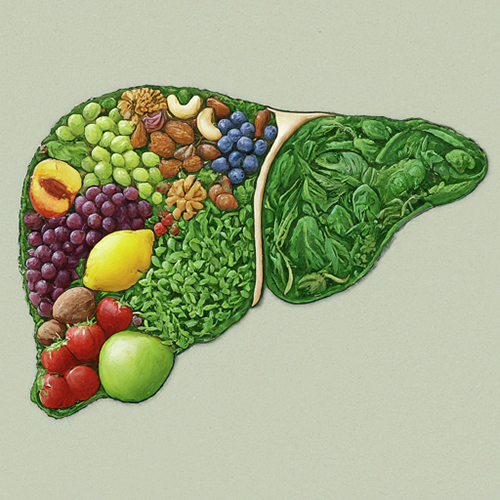
Weighing in at 1,500 grams, the liver is the most significant internal organ responsible for most chemical processes and metabolic functions. Each minute, approximately a liter and a half of blood from the intestine arrives at the liver through the portal vein. This blood contains:
- The nutritional components of foods
- The toxins they contain
- The medications that might have been taken
- Any other substance in the digestive tract can be passed into the bloodstream.
Before the blood from the intestine, which circulates through the portal venous system, is distributed throughout the body, it must pass through the liver. There it undergoes:
- The processing of nutritive substances carried in the portal blood from the intestine. For example, part of the glucose is transformed to reserve glycogen; amino acids are joined in specific sequences, providing the unique proteins for each body; fatty acids are joined with glycerin to form stored fat.
- Neutralization of toxins and foreign substances from the digestive tract.
The liver performs another critical role: it secretes the bile necessary for digestion, which is stored in the gall bladder.
Best Foods for The Liver
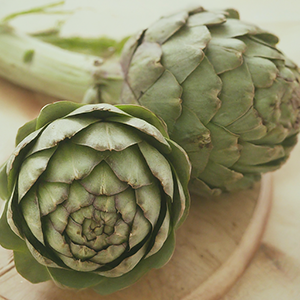
ARTICHOKES produce intense bile. Usually, the liver secretes approximately 800 ml of bile a day, but consuming half a kilo of artichokes can raise that amount to as much as 1200 ml (1.2 liters).
The bile secreted after eating artichokes is less dense and more fluid, thus decongesting the liver. This aids the organ’s detoxification by eliminating many foreign and toxic substances circulating in the blood, including medications, additives, other chemical substances, and bile.
The artichoke is truly the protector of the liver. It is highly recommended in cases of hepatitis (A and B), cirrhosis, fatty liver degeneration caused by alcohol, alcoholic hepatitis, medication intoxication, and any instance requiring the potentiation of the liver’s detoxifying functions. For this reason, it is considered one of the best foods for the liver.
CARDOON IS suggested in cases of chronic or degenerative liver disease (hepatitis, cirrhosis, etc.).
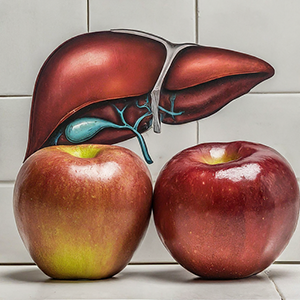
APPLES decongest the hepatic gland thanks to their choleretic and depurant effects. They are highly recommended in cases of chronic hepatitis, fatty liver degeneration due to alcoholic beverage consumption, and cirrhosis. Apples are a must on any list of the best foods for the liver.
ONIONS stimulate the liver’s detoxifying function and improve the activity of other digestive juice-producing glands. As one of the best foods for the liver, onions are highly recommended in cases of hepatic failure caused by chronic hepatitis or cirrhosis.
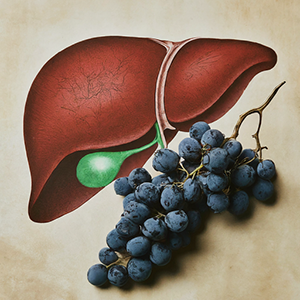
GRAPES are among the foods good for liver repair because they activate the liver’s detoxifying effect and increase bile production. Additionally, grapes facilitate blood circulation in the portal system and thus are valuable in cirrhosis and ascites (the accumulation of fluid in the peritoneal cavity) due to portal hypertension. Any list of the best foods for the liver must have grapes at the very top.
TAMARIND’S bittersweet pulp is used as a condiment in various tropical countries. It is also effective in treating disorders of the gall bladder and liver.
PLUMS are mildly diuretic, depurant, and detoxifying. Their deficient protein, fat, and sodium content make them suitable for liver disease (chronic hepatitis, cirrhosis, etc.).
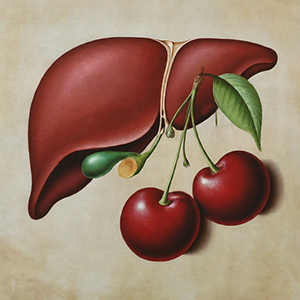
CHERRIES are among the best foods for the liver, thanks to their purifying qualities. One or two days of treatment with cherries represents an excellent cleaner for the body, facilitating the elimination of wastes and toxins. This purifying action aids the liver and the kidneys.
SAUERKRAUT’S healing properties are probably due to its high level of natural lactic acid. This substance has a beneficial effect on diverse ailments such as arteriosclerosis, rheumatism, arthritis, and liver disease.
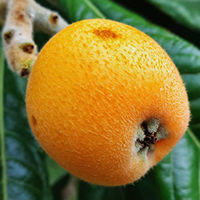
A LOQUAT treatment in the spring gives good results in cases of chronic liver disease: hepatitis, fatty degeneration of the liver, and cirrhosis. It may be repeated every two or three days. A loquat treatment decongests the liver and reduces its volume in case of enlargement. It reduces fluid accumulation in the abdominal cavity, often accompanying liver degeneration. It is unknown which loquat’s components are responsible for these beneficial effects, and research continues.
DISCLAIMER: All content on this website is presented solely for educational and informational objectives. Do not rely on the information provided as a replacement for advice, diagnosis, or treatment from a qualified medical expert. If you are pregnant, nursing, or have any preexisting medical concerns, talk to your doctor before using any herbal or natural medicines.
REFERENCES
- George D. Pamplona-Roger, M.D. “Encyclopedia Of Foods and Their Healing Power.” George D. Pamplona-Roger, M.D. Encyclopedia Of Foods and Their Healing Power. Trans. Annette Melgosa. Vol. 2. Chai Wan: Editorial Safeliz, 2005. 168, 179, 177, 232, 144, 81, 234, 305, 197, 299. [best foods for the liver]
- https://www.healthline.com/nutrition/11-foods-for-your-liver
- https://www.uchicagomedicine.org/forefront/gastrointestinal-articles/2021/september/fatty-liver-disease-diet
- https://www.medicalnewstoday.com/articles/323915
- https://www.webmd.com/diet/liver-good-for-you
Last update on 2025-06-04 / Affiliate links / Images from Amazon Product Advertising API





